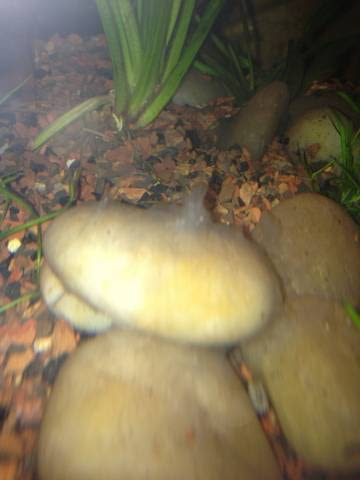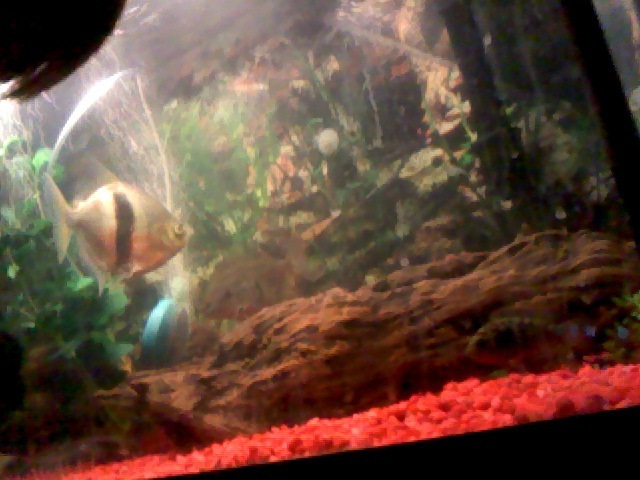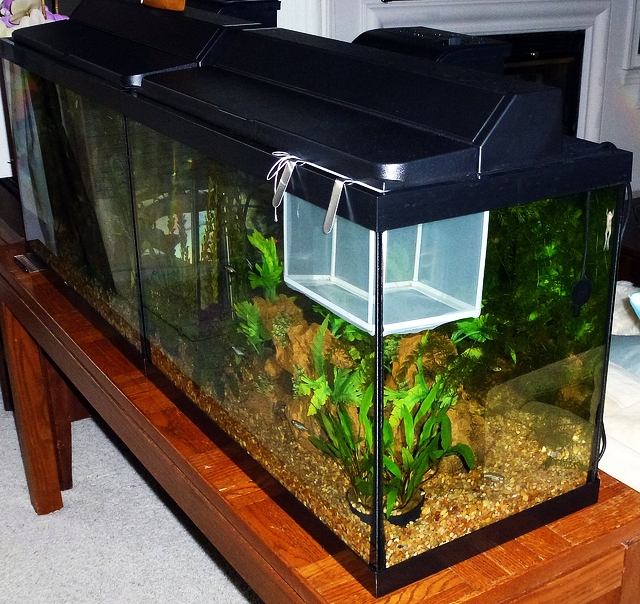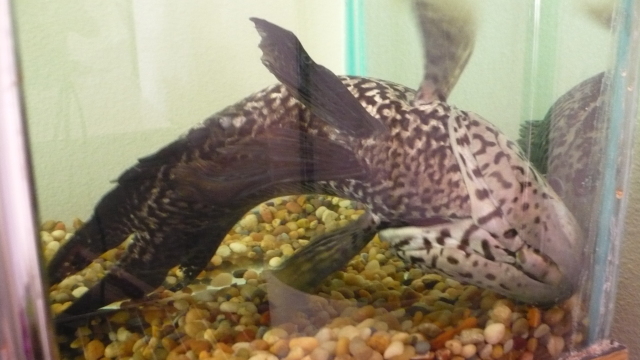QuestionI have a ten gallon tank with six goldfish. I have a black-big-eyed ornamental goldfish. I noticed it had a crablike parasite at the base of its tail. I've searched, but can't find anyhting like it. Do you have any idea what it might be? I was able to remove it from the fish but am curious about its origin. It didn't seem to affect the fish in any way. Anything will be greatly appreciated.
AnswerHi There,
This sounds like Argulus.
Argulus will thrust the stylet into the host's flesh to begin feeding.
There are four pairs of swimming legs that make Argulus very adept at swimming and manoeuvring
on the host. Argulus must live on the host and almost any region is acceptable, with caudal fins
being a particular favourite. When the female is ready to lay her eggs she will drop off the host and swim to the pond bottom and lay in the substrate or a plant, there she will attach her eggs in a mucus coating to protectthem and secure them to her chosen site.
Argulus, nauplii & metanauplii stages develop within the egg up to the first copepod stage, which
will limit treatments some what as the eggs are protected by a some what impenetrable shell.
The second stage copepod has one pair of swimming legs and is approx 1mm in length, metamorphism continues totake place until the copepod reaches the seventh stage (sub adult) to
get from sub adult to full adult takes approx 2 weeks, dependant on species, water temperature and involves further numerous moults, the whole life cycle will complete in approx 100 days, dependent
on conditions and species.
Argulus, when feeding will release a haemorrhaging chemical into the host, which prevents clotting
of the blood and keeps the bodily fluids, blood, etc flowing, at the same time Argulus also releases a chemical messenger that attracts other fish lice to feed at the same site and further damage occurs.
Heavy infestations, as opposed to just the odd one or two, of both Argulus and Lernaea are quite common when infection occurs, and is a major cause of secondary bacterial infections leaving
serious wounds and the fish very lethargic. The wounds from Argulus heal quite slowly, if at all
without outside intervention and will show signs of haemorrhaging.
Treatment.
Masoten @ 1 gm per 87 gallons over 65deg weekly for four treatments, or below 65 deg, 6/8 gm per 1000 imperial gallons is the treatment that I choose.
Salt is not an option as most life stages of Argulus can resist up to 3.5% salinity.
Dimilin may be an option for Argulus if Masoten is not available.
Argulus can't stand being dried out so drying the pond and equipment is an option after first
removing the fish for treatment to a q-tank.
Hope this helps,
Chloe :)

 white fuzz on aquarium stones
Question
Fuzz
Hi Jaymie, I recently set up a Hag
white fuzz on aquarium stones
Question
Fuzz
Hi Jaymie, I recently set up a Hag
 Jack dempsey
Question
my jack dempsey
Hello recently bought a 1 inch
Jack dempsey
Question
my jack dempsey
Hello recently bought a 1 inch
 my molly had babies
QuestionI have an 39 gallon tank with 4 mollies 2 tetra
my molly had babies
QuestionI have an 39 gallon tank with 4 mollies 2 tetra
 Swim Bladder Problem
Question
Buttnippers Problem
I have an 8 yr old Manguan
Swim Bladder Problem
Question
Buttnippers Problem
I have an 8 yr old Manguan
 unknown fish
Question
Unknown Fish
I got 3 fish from a friend, but d
unknown fish
Question
Unknown Fish
I got 3 fish from a friend, but d